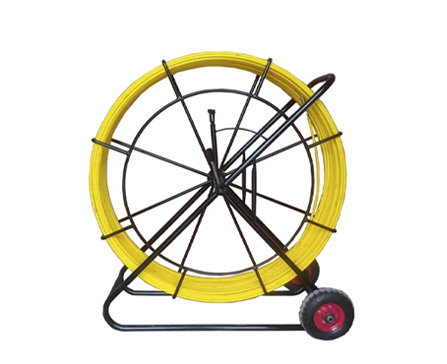
-
 Afrikaans
Afrikaans -
 Albanian
Albanian -
 Amharic
Amharic -
 Arabic
Arabic -
 Armenian
Armenian -
 Azerbaijani
Azerbaijani -
 Basque
Basque -
 Belarusian
Belarusian -
 Bengali
Bengali -
 Bosnian
Bosnian -
 Bulgarian
Bulgarian -
 Catalan
Catalan -
 Cebuano
Cebuano -
 Corsican
Corsican -
 Croatian
Croatian -
 Czech
Czech -
 Danish
Danish -
 Dutch
Dutch -
 English
English -
 Esperanto
Esperanto -
 Estonian
Estonian -
 Finnish
Finnish -
 French
French -
 Frisian
Frisian -
 Galician
Galician -
 Georgian
Georgian -
 German
German -
 Greek
Greek -
 Gujarati
Gujarati -
 Haitian Creole
Haitian Creole -
 hausa
hausa -
 hawaiian
hawaiian -
 Hebrew
Hebrew -
 Hindi
Hindi -
 Miao
Miao -
 Hungarian
Hungarian -
 Icelandic
Icelandic -
 igbo
igbo -
 Indonesian
Indonesian -
 irish
irish -
 Italian
Italian -
 Japanese
Japanese -
 Javanese
Javanese -
 Kannada
Kannada -
 kazakh
kazakh -
 Khmer
Khmer -
 Rwandese
Rwandese -
 Korean
Korean -
 Kurdish
Kurdish -
 Kyrgyz
Kyrgyz -
 Lao
Lao -
 Latin
Latin -
 Latvian
Latvian -
 Lithuanian
Lithuanian -
 Luxembourgish
Luxembourgish -
 Macedonian
Macedonian -
 Malgashi
Malgashi -
 Malay
Malay -
 Malayalam
Malayalam -
 Maltese
Maltese -
 Maori
Maori -
 Marathi
Marathi -
 Mongolian
Mongolian -
 Myanmar
Myanmar -
 Nepali
Nepali -
 Norwegian
Norwegian -
 Norwegian
Norwegian -
 Occitan
Occitan -
 Pashto
Pashto -
 Persian
Persian -
 Polish
Polish -
 Portuguese
Portuguese -
 Punjabi
Punjabi -
 Romanian
Romanian -
 Russian
Russian -
 Samoan
Samoan -
 Scottish Gaelic
Scottish Gaelic -
 Serbian
Serbian -
 Sesotho
Sesotho -
 Shona
Shona -
 Sindhi
Sindhi -
 Sinhala
Sinhala -
 Slovak
Slovak -
 Slovenian
Slovenian -
 Somali
Somali -
 Spanish
Spanish -
 Sundanese
Sundanese -
 Swahili
Swahili -
 Swedish
Swedish -
 Tagalog
Tagalog -
 Tajik
Tajik -
 Tamil
Tamil -
 Tatar
Tatar -
 Telugu
Telugu -
 Thai
Thai -
 Turkish
Turkish -
 Turkmen
Turkmen -
 Ukrainian
Ukrainian -
 Urdu
Urdu -
 Uighur
Uighur -
 Uzbek
Uzbek -
 Vietnamese
Vietnamese -
 Welsh
Welsh -
 Bantu
Bantu -
 Yiddish
Yiddish -
 Yoruba
Yoruba -
 Zulu
Zulu


Oct . 17, 2024 14:47 Back to list
Exploring Innovative Techniques for Winter Navigation with Snow Marker Sticks
Exploring the Beauty and Significance of Snow Marker Sticks
As winter blankets the landscape in a soft layer of white, the serene beauty of snow-covered terrain captivates many. Among the various tools that help in navigating and understanding this winter wonderland, snow marker sticks play a crucial role. These unassuming tools, often overlooked, serve significant functions for outdoor enthusiasts, hikers, and winter sports enthusiasts alike.
What Are Snow Marker Sticks?
Snow marker sticks are typically long, brightly colored poles that are inserted into the snow to mark trails, hazards, or boundaries. They can be made of various materials including plastic, wood, or fiberglass, and are designed to withstand harsh winter conditions. Their bright colors, often neon orange or yellow, ensure that they are visible against the white backdrop of snow, allowing users to easily navigate their surroundings.
Safety and Navigation
One of the most important functions of snow marker sticks is safety. During winter activities such as skiing, snowboarding, or snowshoeing, visibility can often be compromised due to snow, fog, or blizzard conditions. Snow marker sticks provide a reliable method for marking routes, preventing individuals from accidentally wandering off into dangerous areas. They can delineate paths through backcountry terrains or warn of hazards such as cliffs and tree wells.
Moreover, in avalanche-prone areas, these sticks can mark safe zones or paths for evacuation. In scenarios where visibility is severely limited, having a clearly marked trail increases the chances of safe navigation. For this reason, trail builders and ski resorts often utilize snow marker sticks to guide visitors through their facilities.
Significance for Environmental Monitoring
snow marker sticks

Beyond navigation, snow marker sticks also play a role in scientific research and environmental monitoring. Researchers often use these markers to delineate study plots in snow-covered areas. By placing markers at specific intervals, scientists can monitor snow depth, density, and moisture levels with ease, aiding in studies related to climate change, hydrology, and ecology.
These markers help in understanding how snowpack influences water resources during the melting season and how it affects local ecosystems. The data gathered can be critical for managing water supplies, predicting flood risks, and understanding the impacts of climate shifts on different environments.
Aesthetic and Recreational Value
In addition to their practical uses, snow marker sticks also add an aesthetic aspect to winter landscapes. Brightly colored poles dotting the white expanse can create a whimsical and festive atmosphere, reminiscent of a winter wonderland. For photographers and artists, these contrasting colors introduce a sense of vibrance and life into what might otherwise seem like a monochrome world.
For recreational users, snow marker sticks serve as beacons of fun and adventure. Children and adults alike enjoy the thrill of building snow forts around markers or using them as bases for games in the snowy outdoors. They often become a central part of winter play, sparking imagination and outdoor recreation.
Conclusion
While they may seem simple, snow marker sticks hold a wealth of significance beyond their function. These tools not only enhance safety and navigation but also contribute to important scientific research, and add to the visual appeal of winter landscapes. As we embrace the beauty of winter, let us not overlook these essential markers that guide us through the snow, ensuring our adventures are safe, enjoyable, and enriching. Whether you are traversing a scenic trail, engaging in scientific exploration, or simply enjoying a day in the snow, snow marker sticks serve as silent but vital aids in our winter journeys. Embrace the season, stay safe, and appreciate the wonders of nature's white blanket!
Latest news
What Are Construction Tools and How Are They Used?
NewsJul.11,2025
Professional-Grade Duct Rodding Tools for Superior Cable Installation
NewsJul.11,2025
Enhancing Safety and Efficiency with Modern Hot Stick Solutions
NewsJul.11,2025
Empowering Cable Installation with Advanced Rodder Solutions
NewsJul.11,2025
Elevate Your Cable Installation Projects with Cable Pulling Tools
NewsJul.11,2025
Efficient Cable Handling Solutions: Cable Rollers for Sale
NewsJul.11,2025











